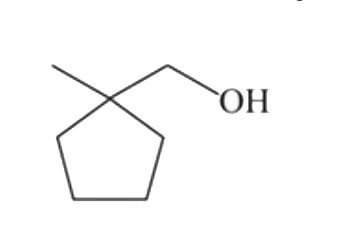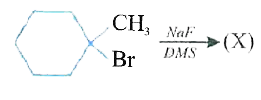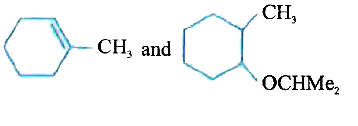BiCl3+KI→(X)KI−−−−→(excess)(Y)
Colour of (X) and shape of (Y) are respectively:
orange, tetrahedral
black, tetrahedral
orange, sqaure planar
black, square planar
The correct Answer is:B
X=BiI3
Y=K[BiI4]
Topper's Solved these Questions
- BOOK - GRB PUBLICATIONCHAPTER - SALT ANALYSISEXERCISE - I. IIIrd Group Cations36videos
SALT ANALYSIS
- BOOK - GRB PUBLICATIONCHAPTER - SALT ANALYSISEXERCISE - J: IVth Group Cations24videos
SALT ANALYSIS
- BOOK - GRB PUBLICATIONCHAPTER - SALT ANALYSISEXERCISE - G: Ist Group Cations20videos
SALT ANALYSIS
- BOOK - GRB PUBLICATIONCHAPTER - S BLOCK ELEMENTSEXERCISE - SUBJECTIVE TYPE9videos
S BLOCK ELEMENTS
- BOOK - GRB PUBLICATIONCHAPTER - THERMODYNAMICSEXERCISE - All Questions704videos
THERMODYNAMICS
Similar Questions
Consider the following sequence of reactions
 H+/Δ−−−−→(X)1.03−−−−−−−−−−→2.Zn/CH3COOH(Y)NaOH−−−→Δ
H+/Δ−−−−→(X)1.03−−−−−−−−−−→2.Zn/CH3COOH(Y)NaOH−−−→Δ 
The intermediate products (X) and (Y) are respectivelyView SolutionBiCI3KI−−→ Black ppt. (M)excessKI−−−−→ Soluble complex (N) Find the number of moles of I− ions involved for the formation of one mole of (N).
View Solution
Knowledge Check
- Question 1 - Select One

(CH3)2CHClNaF−−→H2O(Y)
X+YH+−−→(Z)
Compound (X) and (Z) are respectivelyA B
B C
C D
D
- Question 2 - Select One
↑⏐⏐Y(g)KI←−−CuSO4dilH2SO4−−−−−→X(Bluecolour),X and Y are
AX=I2,Y=[Cu(H2O)4]2+BX=[Cu(H2O)4]2+,Y=I2CX=[Cu(H2O)4]+,Y=I2DX=[Cu(H2O)5]2+,Y=I2 - Question 3 - Select One
CH3CH2COOHCl2/Fe−−−−→(X)Alc.−−→KOH(Y)
Compound (Y) is :ACH3CH2OHBCH3CH2CNCCH2=CHCOOHDCH3CH(Cl)COOH
In the reaction
X + Y NaOH−−−−−−→5∘CCH3−OH∣CH−CH∣CH3−CHO
(X) and (Y) Will respectively be :View Solutioni. SiCl4H2O−−→(X)100∘C−−−→(Y)
In the above reaction (X) and (Y) respectively are :View SolutionCumene (i)O2−−−−−−−−−−→(II)H2O,H+(X) and (Y) ,
(X) and (Y)respectively are :View SolutionHgCI2+excess ofKI→(A)−−→NH3(B) ,(A) and (B) respectively are
View SolutionMg(s)+C(s)Δ−−→highTXH2O−−→Mg(OH)2+Y
X and Y are respectively:View Solution

